Tazmanian Ballroom advertisement, courtesy of Karen Young.
Article originally published March 30, 2012 by The Grid online (TheGridTO.com).
A look back at the ‘80s east-end haunt that imported U.K. rave culture to Toronto, let dancers openly shag on the third floor, and gave a young Gerard Butler his first gig as a doorman.
BY: DENISE BENSON
Club: Tazmanian Ballroom, 99-101 Jarvis
Years in operation: 1987-1990
History: Just as true characters have frequented Toronto’s most memorable nightclubs, they’ve owned them as well. Few have been as influential, audacious, or fanciful as nightlife impresario and restaurateur Johnny Katsuras. Since the late 1970s, the man better known as Johnny K has owned and operated a wide variety of thematic hot spots—often with wife, business partner, and chef Laura Prentice—in areas just off the beaten path, with a lean towards the city’s east end.
In the second half of 1987, Katsuras followed on the success of his establishments—including his long-running, self-titled resto and surprisingly successful Beaches dance bar Krush—by turning attention to Jarvis and Richmond. Here, in an area filled with historic, often underused commercial buildings, Johnny K purchased a three-floor heritage property built in 1898, once known as MacFarlane’s Hotel. It had previously operated as The Jarvis House and then gay bar Club 101 by the Chrysalis Group, also owners of Yorkville mega-club The Copa.
Ever the rebel, Johnny K chose to offer his crowd something closer to downtown, but more seedy than trendy. He’s always been careful to cultivate a sense of adventure and to purchase real estate accordingly.
“Downtown properties are generally filled by people who follow each other, and I never wanted to do that,” says Katsuras today. “My goal was to find empty buildings that I could put a restaurant-club in, because the kind of business that I like to do is not ‘Oh, look at that place—let’s walk in there and eat.’ No. My places are more about ‘I’m not going in there; that doesn’t look right.’ Unless you know. My signage has always been intended to keep people out, not bring them in.”
There was no real sign for Tazmanian Ballroom; you found the place by looking for the crowds gathered out front. Inside, hundreds partied on a main floor that had a 1920s-meets-’70s cocktail vibe, complete with black-and-gold paint, velvet curtains, vintage sofas, dimmed chandeliers, and a huge aquarium. The basement level was even darker.
“The Ballroom was free of bells and whistles,” says Johnny K. “It was a nightclub with no light show. It was like a big, old Victorian-mansion house party. I have to admit: part of my inspiration was that I had read about Nell’s in New York and, also, I was a big fan of The Rocky Horror Picture Show, so a lot of the Ballroom was based on it.”
“The main level set the standard for most lounge clubs of today,” says Mark Oliver, who began his career at the Taz on his way to becoming one of Canada’s top DJs.
“The basement was a different vibe altogether,” Oliver adds. “Able to hold perhaps 200, it had a low ceiling, minimal lighting, bass-rattling turbo sound system and lots of bathroom mischief. If the main level was an opulent castle, the basement was certainly its dungeon.”
Why it was important: Tazmanian Ballroom drew a young, beautiful and very fashion-conscious crowd. They were there because of Johnny K’s mix of creativity and cockiness, and his ability to hire talented people who he encouraged to run with their ideas.
“Johnny K was arguably the most charismatic club owner this city has ever seen,” says Oliver, who’d worked as a bus boy at Krush before helping renovate the Ballroom where he would bartend and, eventually, become a star resident DJ.
“Johnny assembled the most eclectic staff I have ever worked with, and he really wasn’t interested in making money off the club. He’d rather have five of the right people in the club than 500 spending money. He was there to have a good time, and this attitude was infectious.”
Put in charge of implementing Johnny K’s vision was David Prentice, Laura’s brother and Katsuras’ right-hand-man. By 24, David had run the rock department at Sam The Record Man for years, had a background in advertising and marketing, and was deeply influenced by a stay in London where he was wowed by club DJs mixing deep house, disco and soul. He became Tazmanian Ballroom’s Marketing and Promotions Director and much more.
“Johnny gave me free rein to run the club as I saw fit,” says David. “He was very progressive and aggressive with culture. He’s not a guy who likes to sit down and have meetings. He’s much more ‘Let’s do it.’ I credit John with re-defining the nightlife scene in Toronto—with the help of many people.”
Initially open only Saturdays and for special events, Tazmanian Ballroom attracted large crowds through equal parts programming and exclusivity. At a time when most licensed dance clubs in Toronto—think The Diamond, RPM, The Copa or Big Bop—were sizable and thus required large crowds to stay afloat, the smaller Ballroom took a cue from trendy New York clubs and implemented a stringent door policy.
“It wasn’t a first-come, first-served situation,” says Johnny K. “I spent a lot of time and effort picking the right guys to do the door; they had to understand how to see something in somebody. It wasn’t about expensive clothes; it was about what people chose to wear. You could be a little awkward, but you could still get in because you had something. It was about individualism rather than following the crowd.”
“Guys would roll up in Lamborghinis, be turned away and told they may want to try showing up in a cab the next time,” recalls Oliver. “Some people would try for weeks, trying different outfits and hairstyles just to gain entry. There were no dress-code rules; it was all about having the right mix of people inside.”
“Tazmanian Ballroom was a leading-edge type of scene, with many racially mixed couples, straight and gay,” adds Michele Geister, then a MuchMusic producer who moonlighted in the Ballroom’s DJ booth. “Young professionals mixed with club kids and budding DJs. There was a real unity to the patrons singing and getting down in the house party-like atmosphere that wasn’t duplicated anywhere else in T.Dot.”
Through her work at Much, including as a producer/director of pioneering programs Soul in the City and RapCity, Geister had extensive knowledge of hip-hop, which she mixed at the Ballroom with house, acid, techno, funk and reggae.
She could frequently be found playing alongside good friend Karen Young (sometimes under the handles ForceMG and FunKY). Both were largely influenced by CKLN programs Fantastic Voyage and Dave’s Dance Music, and were dancefloor devotees of the Twilight Zone.
“David Prentice liked our enthusiasm and selections, and offered us a gig in the basement,” Young recalls. “So we co-gigged for a while, then split to play separately. I played Saturday nights, Michele played Friday. Back then, we lugged 50-to-100 pounds of vinyl into a taxi in our lycra miniskirts and high heels.
“Part of the charm of the Taz was that it was not a super-slick club like The Copa or RPM,” says Young, a Ballroom resident for more than a year. “It had terrible DJ booths and if people danced right in front of the booth area, the records would jump. It was more like how a party at your house would be in terms of set-up. The basement was just a dark room with mirrors, a bar and no furniture. It was totally underground, with a little old-school.” [Post publication, Young compiled this selection of sounds she played at the Taz.]
These sounds—coupled with the rare groove, disco, and rock played upstairs by David Prentice and his talented then-girlfriend Heather Lawrence—made the Taz stand out.
“Musically, it was pretty controversial for its time in Toronto,” says Prentice. “It took a couple of months for people to catch onto it. I’ll credit the Assoon brothers and Twilight Zone though, because they were doing everything I’d heard while in London, and John gave me the opportunity to bring all of that to a more commercial venue.”
A new phase began when Mark Oliver moved from bouncing between bartending and DJing upstairs or warming things up in the basement to DJing each weekend.
“I played on the main level at first, as did Heather Lawrence,” says Oliver. “When she was playing, I would tend one of the bars. I was making $500 a night in tips at the bar, but I really only wanted to DJ, even for the going rate of $45 a night. It was the Summer of Love in the UK in 1988, and I felt an incredible urge to spread the love on this side of the pond.
“From that point on, I played house in the basement every Friday and Saturday. The crowd was very diverse, from b-boys to fashionistas. We were jacking to the new acid-house sounds for the first time, so it was very exciting and special.” (For those keeping track, this was well before Oliver would produce raves under the Exodus collective banner or fill the back room of the Cameron with his Acid Jazz Wednesdays.)
By this point, Tazmanian Ballroom was packed with very different crowds each weekend. Fridays had opened as Rock & Roll Fag Bar early in 1988 when Maxwell Blandford, a former manager at Nuts & Bolts, was lured from his job at The Copa to become the Ballroom’s new promo director.
“I liked the idea of doing a gay night in a straight club as it really was not being done much in Toronto at that time,” says Blandford. “I also thought the music in the Toronto gay scene was so lame and Rock & Roll Fag Bar was a great opportunity to launch something new.”
Although there was initial controversy surrounding its name—complete with CBC coverage and letters of complaint in a local weekly—Rock & Roll Fag Bar was an instant success.
“The night had no glitz, yet it was so fabulous with its boudoir decoration,” Blandford enthuses. “It was two floors, with Heather and David spinning rock and rare groove upstairs while Mark played house downstairs. Rock & Roll Fag Bar had many distinct elements, but music was first and foremost.
“We also had sex, and loads of it. It started out on Fridays when the customers broke down the door to the third floor. It was a series of abandoned rooms—the venue had been a brothel decades before—and each filled up. There could be 150 guys up there. We put a bar in and gave out condoms.
“As repressive as the liquor laws were at that time, so was sex because of AIDS. So we offered a wild, spontaneous place to have sex and then go back downstairs and dance. Sex on the third floor was not exclusive to the gay night either. It became a very popular place for a quickie on Saturdays too, until we eventually closed the floor.
“Breaking the rules was one of the most significant features of the Taz,” concludes Blandford, now living in Miami and marketing high-end South Beach spots including The Forge. “Johnny was a ‘bad boy’ and attached himself to others. The more different and edgy you were, the better your events.”
“There weren’t a lot of rules at the Taz,” agrees Karen Young. “Upstairs, people would dance on the bar and swing from the ceiling. One time they brought down the sprinkler system. There always seemed to be men in the ladies’ washroom, and a stinky mop closet in the basement was another favourite shagging spot.”
Audacity was a Taz trademark.
“Those considered freaks who were banished from other clubs were encouraged at the Ballroom; the wilder, the better,” says Oliver. “Dallas, a bartender, would blow fire across the length of the bar a few times a night. I remember driving my Vespa around in circles through the club while there were still people dancing.
“A good friend of mine, Gerry from Scotland, was living here at the time, and kept asking me to find him a job. I finally got him in as a doorman. The original doorman, Greg, was nicknamed ‘Hollywood,’ but it was Gerry who went on to become the real Hollywood. He is now more commonly known as Gerard Butler.”
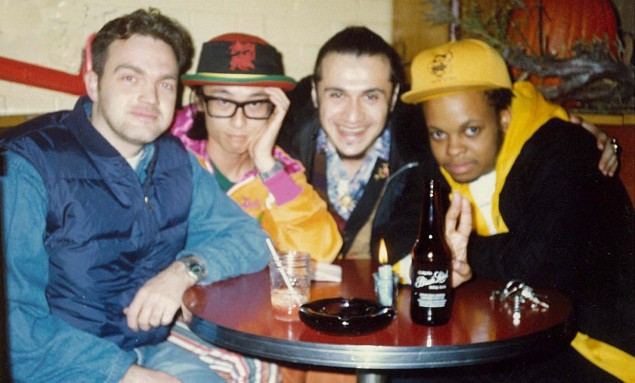
Maxwell Blandford (left) with Towa Tei and Super DJ Dmitri of Deee-Lite, and their tour manager.
Photo courtesy of Blanford.
Who else played/worked there: Special events at the Ballroom included soirees hosted by infamous hair stylist Diva, vogue balls hosted by designers Dean and Dan of dSquared, and early Fetish Nights.
Super DJ Dmitri of Deee-Lite played the opening of Rock & Roll Fag Bar while a handful of early hip-hop artists also performed at the Taz.
“David Prentice loved Spoonie Gee, and brought him to the Ballroom, as he later did Philly rapper Schoolly D and his DJ Code Money,” Geister recalls. “Although both times the turnout wasn’t great, they were legendary, up-close experiences for those in attendance.”
Just as risks were taken in programming, Johnny K invested in other arts endeavours, including as publisher of I.C.E. magazine, a heavily stylized arts, music, and fashion publication distributed for free in Katsuras-owned venues and across much of the country.
Staffed largely by Tazmanian Ballroom employees—with David Prentice as Editor, Blandford as Managing Editor, and Malcolm Brown as Art Director—I.C.E. won design awards and featured early photography by artists including Floria Sigismondi and Lisa Mann.
“We wanted a magazine that reflected our vibe, and there was a market for it,” says Brown, who then also bartended at the Ballroom, as did his brother, photographer Adrian Brown.
“Johnny had a lot of money at that time, and was able to handle the huge expenses that our I.C.E. was amassing. Everyone supplemented the little pay we made at the magazine by working in Johnny’s clubs. By that time, he also had The Claremont Hotel, and King Curtis, Liberty Restaurant, and The 4th and 5th all in the same building as I.C.E. at The Liberty.
“We were all very young and Johnny would let people swim on our own,” says Brown, who went on to design or art direct at magazines including Shift, Raygun, and Outpost. “The more outrageous an idea, the more he would support it. The magazine collapsed as money ran out, but anyone associated with it had a very special experience thanks to Johnny K.”
What happened to it: Tazmanian Ballroom ran for little more than two years, but went out with a bang in early 1990.
“Things were even crazier than usual at the closing party,” says Oliver. “The fire department showed up, and I’ll never forget the looks on their faces when they came in the basement where I was spinning. The ceiling was on the verge of collapse from the mayhem.”
“I remember being at the last night very, very late and being ushered out by firemen who had had declared the building unsafe,” corroborates Geister. “What had been a legendary scene partied right to the end. I’m happy that I was a part of it, and got to experience what I believe were the real golden years of nightclubbing in Toronto.”
She, along with Oliver, Blandford, Young, and much of the Ballroom staff went on to work at various rooms within Johnny K’s nearby Liberty building.
Toronto’s real estate market crashed in 1989, and Johnny K was never one to let decisions linger. He sold the Jarvis building to the Ken Thomson family, who later sold it to Kiosk Furniture. It was boarded up for some time, later used for warehousing and storage, and opened late 2011 as the Toronto location of furniture and design store Poliform.
Johnny K went on to open numerous restaurants and lounges, most notably Mrs. Smith’s Cocktail Party, Lolita’s Lust, and Tomi-Kro, which closed suddenly last October. He and Laura Prentice now operate The Playpen at Gerrard and Carlaw.
David Prentice now lives in St. Catharines with his family, and owns two outposts of the Kilt & Clover pub.
The Taz spirit is carried on in the form of Tazmania Ballroom, a Hong Kong lounge and club opened by Gilbert Yeung, a former regular at the Toronto location.
Postscript: Sadly, Johnny Katsuras passed away following a battle with cancer in late September, 2014. His influence on Toronto’s culinary and nightlife scenes will long be felt.

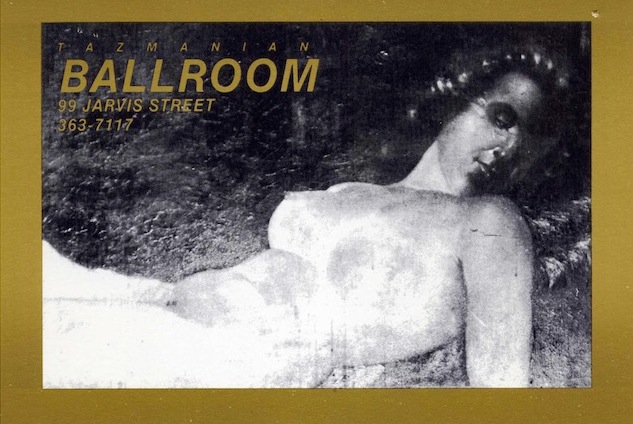
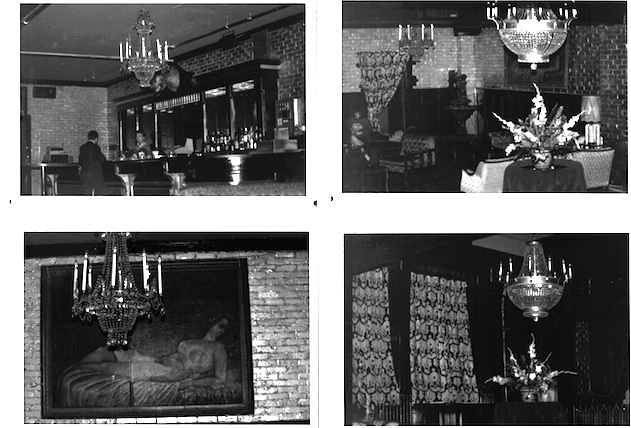
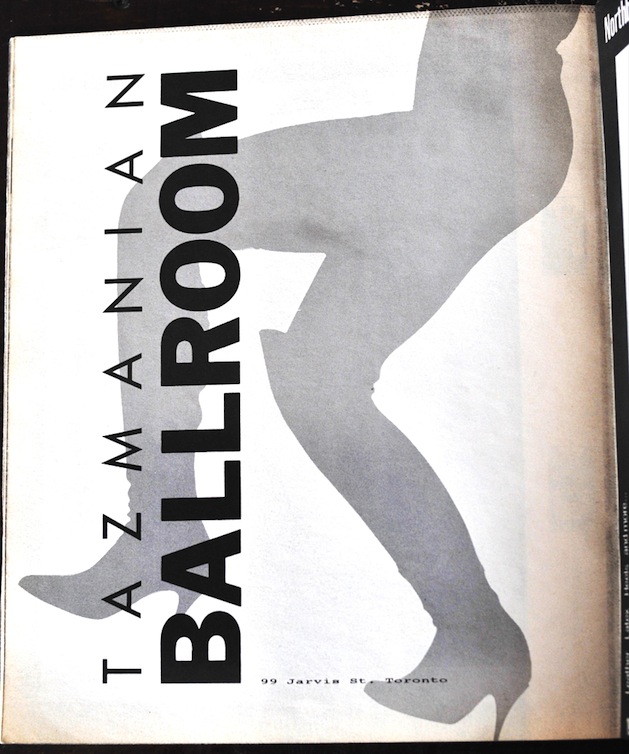

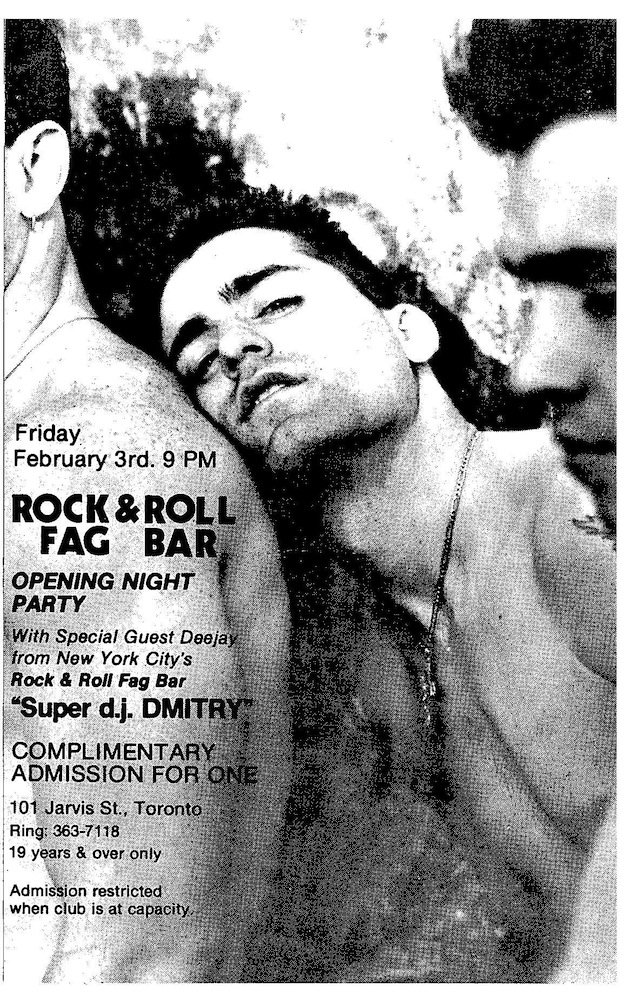
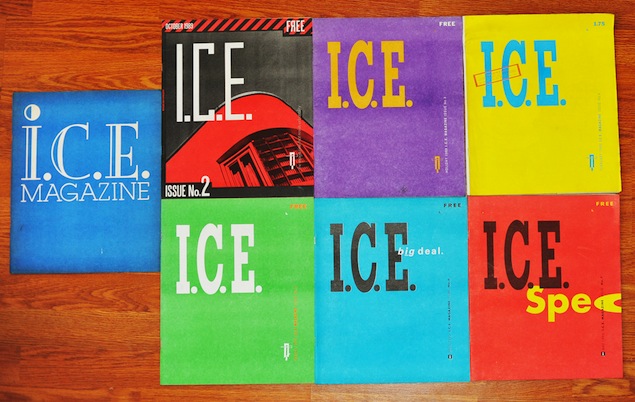
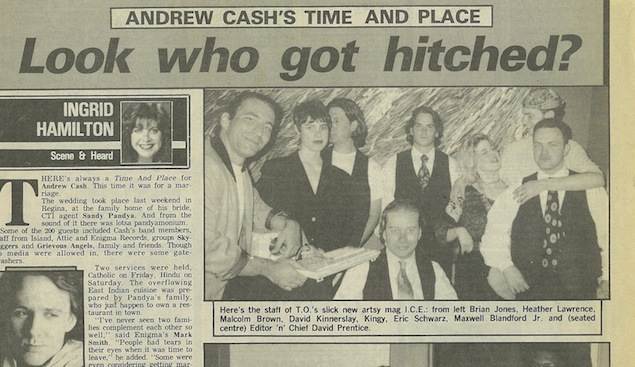
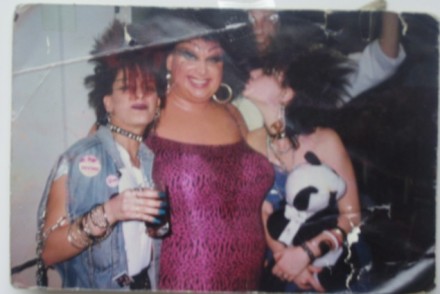
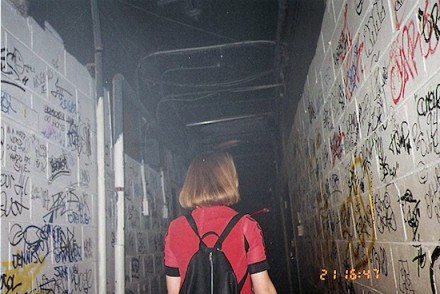
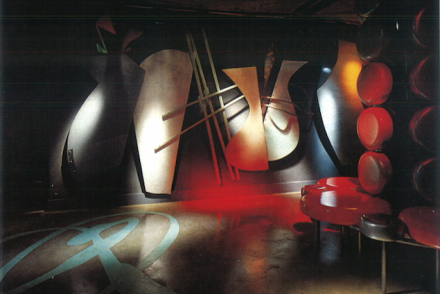

5 Comments
Graphika Studios remembers,
Chrysalis Group & the incredible Tom Kristenbrun
who granted Norm, Gary, and, myself a contract
to design The Logo for The Copa
which was, as, i remember,
NO easy feat – getting that neon placed into that sign
it truly, was a lighthouse to a landmark in Yorkville,
for dance, as, well as concert venues
that was the place in Toronto to be,
they were ‘good’, ‘happy’ and ‘fulfilling’ times,
Tom Kristenbrun, big thanks for your knowing,
we could do the job, on short notice !!!
and, deliver it !!!
i once heard our LOGO work won an award
~ so, many good times are always fondly remembered
GOOD STUFF MAGiCALLY HAPPENS
when you work with good people, great organizations…
and, DiSCOVER concepts and ideas that can eXpress !!!
by, creating THE MAGiC that WEAVES iTS ENERGiES
INTO Totality of THE WHOLE MiX & FRAMEWORK of THE WORK !!!
also it was at The Bellair Café., in Toronto, Ontario Canada
where we crossed paths to pick up ideas & checks
it was all ‘good work’ – THANK YOU !!!
Much love, as, well as Blessings to Everyone,
incredible pages in the book of eXpressions of my life !!!
~susan lynne schwenger
“we are all notes in the song,
just different melodies,
iMAGiNE when we sing together,
it will be SUM THiNG”
[…] published by J.H. Beers, 1907; Goad’s Fire Insurance maps as captioned; 1871 Canada Census; Then & Now: Tazmanian Ballroom, by Denise Benson, September 24, 2014; Toronto City Directories; Toronto Daily Star and Globe and Mail Historical Newspapers via […]
Wow… I was just listening to Plastic Dreams and remembering Colby’s before I met the man I’ve been with for 21 years. Hard to imagine that as a gay couple we were both going to these places and experiencing an entirely new trend in music but hadn’t met yet, before home computers were common place and cell phones were something you saw on Star Trek… I was single when I went to RRFB! Well not really, I was dating a mod at the time and we both looked so cool with our parade boots on, baggy faded jeans rolled up and no underwear on wearing tight leather jackets and wet-look hair with “SMITHS” spray-painted on one of our jackets and artwork by Fiona Smyth on the other. Fiona is now a prof at OCA! Who’da thunk it. But the reason why I liked to pretend I was single was the basement with its single strobe light bouncing of sluts in the close-dark and crazy sexy music forcing a boner to show in my jeans – I guess underwear is practical… The Black Eagle still has a fun Friday Night Dance Party, but nothing is like it was back then. We didn’t have wrinkles, we had lots of time, no money and were perpetually bored and horny; RRFB kept us off ManLine phone chats, out of the parks before 2am and inside a world of fantasy for what seemed like a short time. Thank you to the trail blazers for taking chances and providing these places that helped us build our characters, make memories and find God! (LOL)
…fantastic times at the Ballroom. I DJ’d a few times upstairs and on a Rock n Roll Fag night and danced and shouted out “ACEEEED” many a time downstairs. I fell in love with suit of armour. Any one remember that bit of deco upstairs? And the mushrooms were good too Mark Oliver.
All comments in the string below have been republished from their original appearance on The Grid website. We’re including the readers’ comments as they add to these Then & Now stories. We look forward to reading new comments here as well.
Kirk
Fond memories of this place, would be good to do a reunion! Sorry to hear about Johnny’s recent passing. 5:24 pm on October 2, 2014
Naomi
Great article. I was the one that sold Maxwell the ‘Parachute’ outfit lol those were the days! Toronto needs a good jolt of some ‘old school’ back in the game. 11:25 am on April 7, 2012
Sean
LOL: I had a Parachute out as well-think I got it Boomer. I used to party with Gilbert but lost touch-didnt know he opened a Taz in Hong Kong 8:53 am on September 29, 2014
Anthony van Osch
I don’t know…sounds like the kind of place that would have been filled with what would now be called douchebags. 7:26 pm on April 1, 2012
like it is
Not really Anthony, because they wouldn’t have let you in. 12:11 am on April 8, 2012
Karen Young
Nice work Denise! For those of you that want hear a blast from the past, I threw together some selections of what I was spinning in the basement at the time. Enjoy! http://kymedia.com/TazFlashback/ 3:24 pm on March 30, 2012
michael andy poolhall
Loved the Ballroom! The first time i ever heard Milli Vanilli was in the Basement during a fetish night LOL 3:24 pm on March 30, 2012
james vandervoort
Wow. another stunner–the pics alone! But as usual, I recall the music and the madness in that basement. And Mark Oliver had the back page of ICE magazine, for a DJ chart entitled “On theWay Out”, which of course, featured only the latest, greatest and newest of Dj track listings–drove me crazy! How does he get these records so fast i wondered? I fell for the ruse completely….Having also been to NYC’s Rock n Roll fag Bar and also Nell’s–I can tell you, the Taz–basement and top floor–were way more outrageous–and never bettered—the space was notorious–the sounds were untouchable! 2:59 pm on March 30, 2012
Anonymous
Hey Denise – Thanks for this incredibly well-researched piece. The Taz was a beautiful piece of toronto dance culture. It felt truly international which is what I loved about it and now that I’ve read about all the influences I understand why. 2:48 pm on March 30, 2012
TJ
I will buy the book. 1:36 pm on March 30, 2012
Mike Waldorf Astoria
ICE Magazine! Crucial! I remember picking one up as a 14 year old Scarberian, thinking, “Must Get Downtown…”. Thanks again, Denise. These columns are amazing. Can’t wait until you get into the 90′s! 1:24 pm on March 30, 2012
yum
fuck maxwell is so cute. wonder where he is now.. okay, fine. wonder if he’s single. but seriously, there’s only like a 20 year difference? NBD. P.S. LONG LIVE BENSON. 1:15 pm on March 30, 2012
MLS
I remember Max Blandford when he was the manager of Louis — the student pub at the University of Saskatchewan c. 1983 wearing a nice Parachute outfit ! 2:46 pm on March 30, 2012